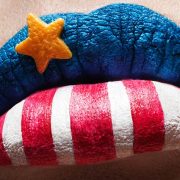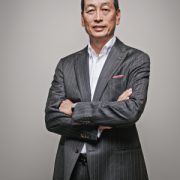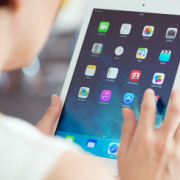Reported in WWD.
By Pete Born with contributions from Allison Collinns
Shiseido Americas Corp. has just gotten bigger by acquiring the Laura Mercier and ReVive brands for an estimated $260 million.
Shiseido has signed a definitive agreement to buy Gurwitch Products, owner of the two beauty brands, from parent Alticor Inc. Shiseido declined to comment on the purchase price.
Mercier, a makeup artist brand that also includes skin-care and bath and body products, and ReVive, a luxury treatment label, had a combined $175 million in net sales for 2015, according to Shiseido. Sales were not broken out, but it is estimated by industry sources that ReVive did $15 million of that total and Mercier generated $160 million.
“Both brands have unique viewpoints, fast-growing and loyal customer bases,” said Marc Rey, president and chief executive officer of Shiseido Americas, adding that they also have the same degree of innovation as the company’s other brands. Rey said he expects the deal to close by the third quarter.
We want to increase our footprint in prestige makeup,” he explained, “which is obviously a very dynamic category in all the continents and particularly in the U.S. and in Asia. We feel the Laura Mercier brand will fit very well alongside the brands we have,” he said, referring to Nars, bareMinerals, Shiseido and Clé de Peau Beauté.
Candace Matthews, who oversees the Gurwitch Products business as president of the Americas Region for Amway, an Altico company, said, “Shiseido is the perfect home for Gurwitch and these brands at this stage in their trajectory. As part of the Shiseido portfolio, Laura Mercier and ReVive will be able to build upon their impressive growth and success while introducing their products and techniques to more customers around the world.”
Janet Gurwitch founded the company in May 1995. The Mercier brand was launched in March 1996 in selected doors of Neiman Marcus and in Henri Bendel. Neiman’s then became an investor 1999 and the company was sold to Alticor in 2006.
Rey noted, “All the brands have their own territory and their different way to talk to women and celebrate women.
“Laura Mercier has a strong position in a number of countries, mainly the U.S. and the U.K. We also believe the brand has an emerging presence in many other markets and we believe the brand has a global potential,” Rey continued. “For instance, it is number two in Thailand. It is growing very fast in Korea. In total, it is in 34 countries. Some of them were opened recently. But we do believe it has potential on all the continents. And we believe, obviously, that we can leverage all the competencies that we’ve built recently,” said Rey, ticking off “The Center of Excellence, Makeup, The Center of Excellence, Digital, and the Shiseido infrastructure in the regions.”
Laura Mercier, who is famous for pioneering the Flawless Face look, is expected to stay with the brand. “Our intention is that Laura Mercier will keep an active involvement,” Rey said.
He added, “We really believe that there is potential across the board and we have a lot of potential in the U.S. and we have a lot of potential in Asia and Europe
We want to increase our footprint in prestige makeup,” he explained, “which is obviously a very dynamic category in all the continents and particularly in the U.S. and in Asia. We feel the Laura Mercier brand will fit very well alongside the brands we have,” he said, referring to Nars, bareMinerals, Shiseido and Clé de Peau Beauté.
Candace Matthews, who oversees the Gurwitch Products business as president of the Americas Region for Amway, an Altico company, said, “Shiseido is the perfect home for Gurwitch and these brands at this stage in their trajectory. As part of the Shiseido portfolio, Laura Mercier and ReVive will be able to build upon their impressive growth and success while introducing their products and techniques to more customers around the world.”
Janet Gurwitch founded the company in May 1995. The Mercier brand was launched in March 1996 in selected doors of Neiman Marcus and in Henri Bendel. Neiman’s then became an investor 1999 and the company was sold to Alticor in 2006.
While acknowledging that ReVive is a small part of the equation, Rey said, “the main reason [for the acquisition] is to grow Laura Mercier and increase our footprint in makeup.” But he added that ReVive has a potential that “we need to untap. We cannot be more specific than that.”
Rey said the objective is not only to increase the company’s footprint in makeup but also to lengthen its global reach, “with a stronger focus on Laura Mercier, frankly.”
He pointed out the acquisition was driven by Shiseido Americas. Masahiko Uotani, president and chief executive officer of the Tokyo-based parent, defined a vision he called Vision 2020 that gave much more power to the individual regions for specific product categories. “He is giving much more power to the regions. We are going to be able to leverage the Center of Excellence, Makeup and Digital and the new Innovation Center that we just opened in New Jersey,” Rey said.
Uotani took the reins at Shiseido in 2014 as the first outsider to become president and ceo since the company was formed in 1872. His aim is to make Shiseido a truly global company and one of his methods was to set up Centers of Excellence around the world. Each center is the authority for that category of business globally. The Centers of Excellence for Makeup and Digital in New York dictate product development for every sector of Shiseido around the globe. The same goes for the Center of Excellence, Fragrance, in Paris, and the Center of Excellence, Skin Care, in Japan.
In making the deal, Financo acted as financial adviser to Shiseido and Moelis & Co. advised Alticor.



